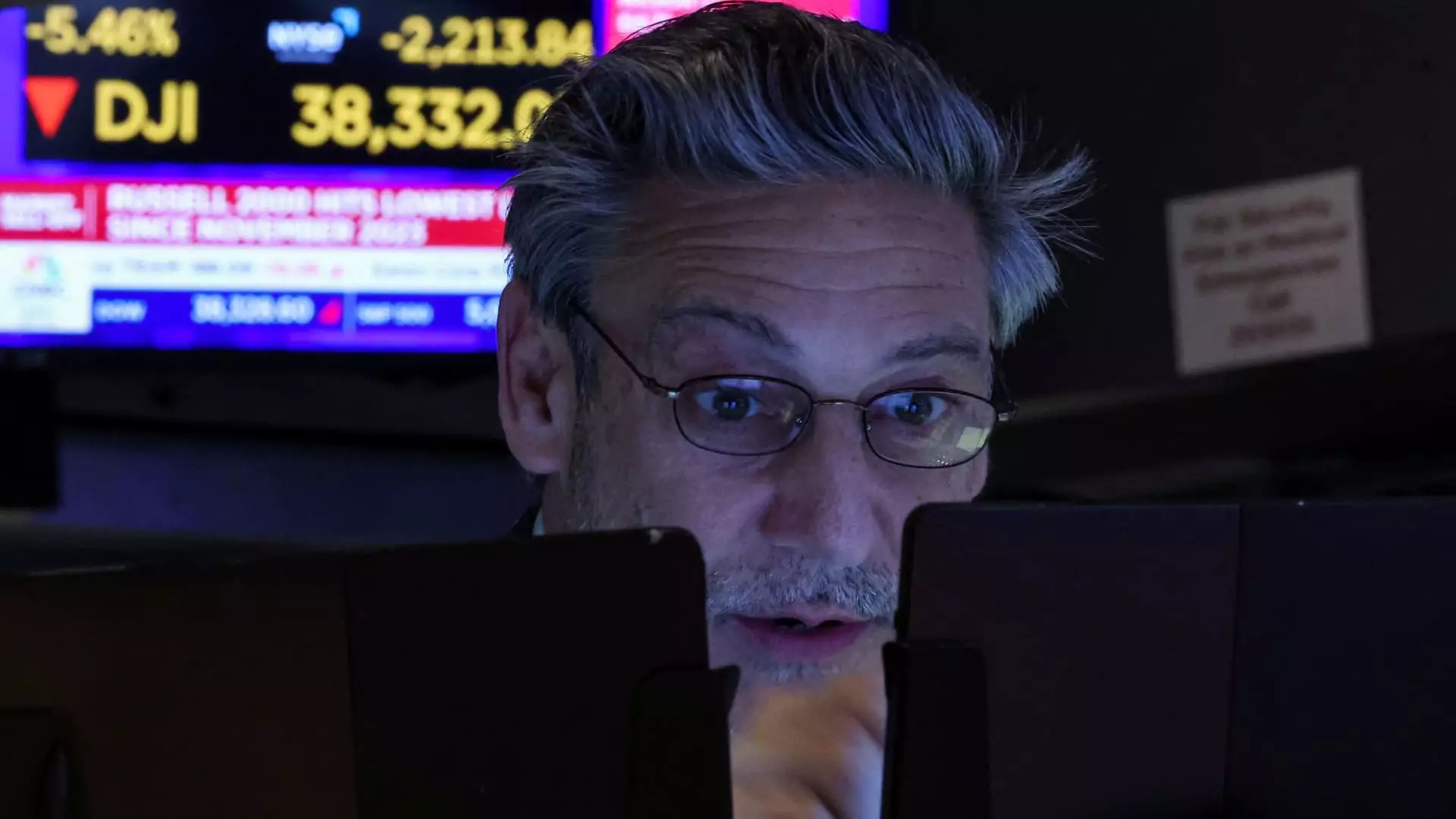The stock market, often regarded as a barometer of economic health, is a fickle beast. Investors obsess over trends, seeking patterns that offer hints about future performance. Yet, all it takes is one unexpected development to send shockwaves through this complex ecosystem. Rapid declines in stock prices can lead exchanges to implement trading halts, an attempt to provide a breather amid chaos. While these mechanisms are ostensibly designed to protect investors, they also raise questions about the underlying stability of the markets themselves.
Halts in trading are reminiscent of the experience of a heart-stopping car crash: sudden, jarring, and destabilizing. They serve as a critical pause that allows investors to re-evaluate their strategies. This was notably illustrated in March 2020, when the Covid-19 pandemic transformed world markets in a matter of weeks, leading to drastic policy measures. Fast forward to now, and we see the same unsettling phenomenon. Global trade pressures, exacerbated by new tariffs introduced under Donald Trump’s administration, create an environment ripe for panic. As futures plummet, investors cling to straws, hoping to find stability where there may be none.
The Trade War’s Toll
The current market turmoil cannot be understood without acknowledging the role of international relations. Trade tensions have escalated with unforeseen intensity, creating a volatile climate in which investors feel both anxious and reactive. The imposition of tariffs is never a risk-free venture, and the repercussions are being felt in markets worldwide. With future contracts tied to indices like the S&P 500 experiencing dramatic overnight drops, investors are left grappling with uncertainty. The implications are profound: the introduction of tariffs not only influences trade relations but also alters market expectations and, consequently, the capital invested in various sectors.
The reality is that financial markets react swiftly to geopolitical changes; the fear of economic isolationism emerges as a potent gravitational force. So, while the headlines might warn of market crashes, what usually underlies these declines is a deeper malaise of distorted trade relations that manifest in stock plummeting. This environment compels investors to reassess their portfolios incessantly, amplifying fears and eventually leading to hasty sell-offs.
The Mechanisms of Stabilization
Trading halts serve as an emergency brake in tumultuous markets, offering a desperate hope for cooler heads to prevail. These regulatory measures come in layers, as seen through the tiered system of circuit breakers that suspend trading based on the extent of market declines. Under Level 1, for instance, a drop of 7% in the S&P 500 triggers a 15-minute pause. However, these measures raise an essential question: Are such pauses mere band-aids over a gaping wound? By only temporarily halting trading, one might argue that exchanges are merely postponing the inevitable rather than confronting the root issues held against the backdrop of global instability.
Further complicating the matter is the current state of the Dow and Nasdaq, both of which have seen catastrophic drops that beg for intervention. For investors, this could be seen as a wake-up call, a reminder that the foundation upon which their financial future is built is fragile and, quite often, driven by external shocks.
Winners and Losers in a Shifting Landscape
In what can often feel like a game of musical chairs, stock market dynamics ensure that some investors inevitably come out on top, while others are left scrambling. The harsh truth is that the moments of crisis expose the vulnerabilities inherent in investing; those unable to adapt may find themselves severely disadvantaged. The stark contrast between the gains and losses highlights a critical reality in the world of finance: calculated risk-taking is often a double-edged sword.
Indeed, the most adept traders might exploit market volatility for gains, while the average investor is left vulnerable, scrambling to make sense of a situation increasingly beyond their control. The realization that not everyone can benefit from adversity should prompt a serious reflection on investment strategies and the role of protective regulations geared toward preserving investor interests. A need for greater transparency and improved risk management emerges as a top priority.
Amidst this chaos and uncertainty, it becomes clear: investors must face the unsettling reality that market stability is often an illusion. What appears to be an opportune moment to invest can morph into a pitfall far too quickly. Whether fueled by political changes or global crises, stock market crashes are an unfortunate yet unavoidable part of the economic landscape, reminding us all of our precarious balance on the financial tightrope.

